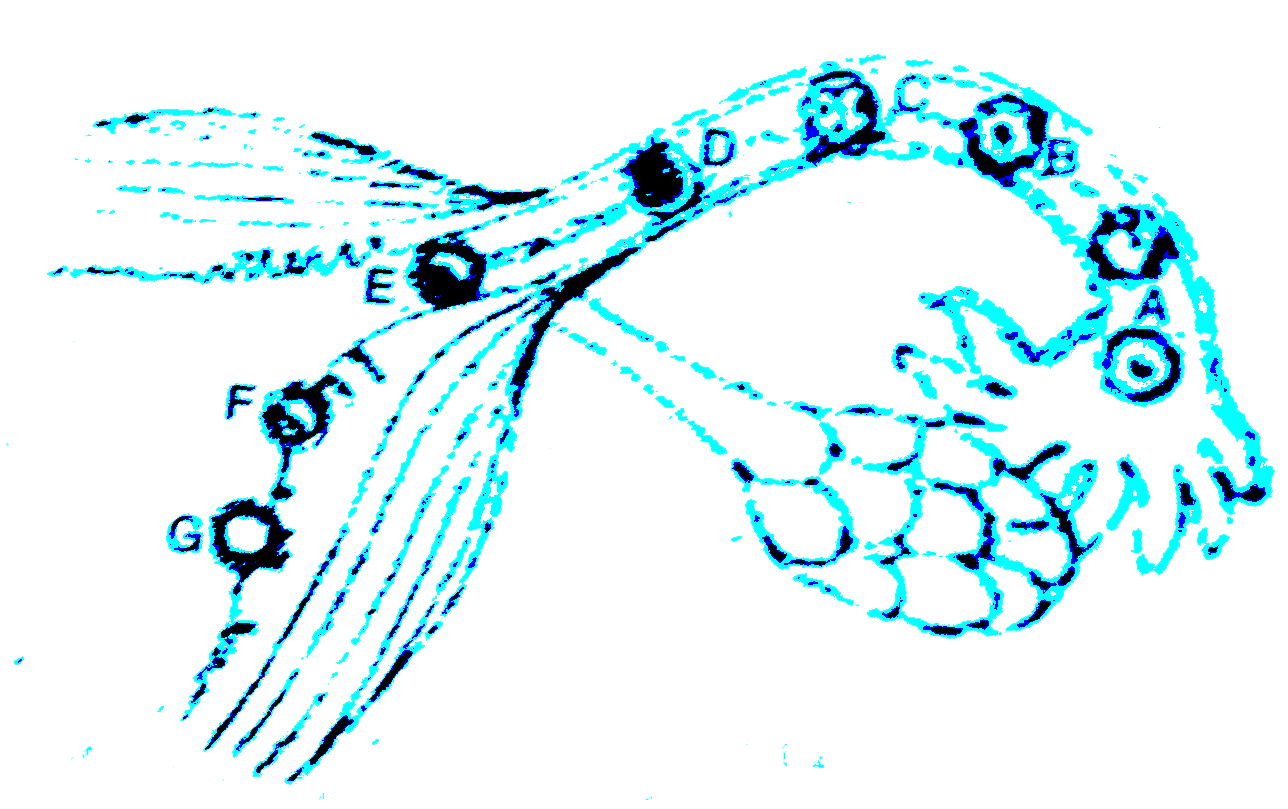Complete Solutions to SECTION-D of chapter REPRODUCTION of Class 12 book with complete answers and questions
| Class 12 | BIOLOGY |
| Chapter | REPRODUCTION |
| TRUEMAN BIOLOGY | SECTION-D |
| Number Of Questions | 27 |
| Academic Year | 2023-24 |
A woman has conceived and implantation has occurred in her uterus. Explain the sequence of changes upto parturition which take place within her body.
View Solution"Incompatibility is a natural barrier in the fusion of gametes". Justify the statement.
View SolutionShow diagrammatically the stages of embryonic development from zygote upto implantation in humans .

View SolutionDraw a schematic diagram of a human sperm and label the cellular components.
View Solution(a)Give a schematic representation of spermatogenesis in humans .
(b) At which stage of life does gametogenesis begin in human male and female respectively ?
(c )Name the organs where gametogensis gets completed in male and female respectively.
View SolutionExplain with the help of a diagram the development of a mature embryo sac from a megaspore mother cell in angiosperm.
View SolutionStudy the flow chart given below . Name the hormones involved at each stage and explain their functions .

View SolutionExplain the different stages of oogenesis in human starting from life till its completion. When and where in the body is oogenesis completed?
View Solution(a) When and how does placenta develop in human female?
(b) How is the placenta connected to the embryo?
(c ) Placenta acts as an endocrine gland. Explain.
View SolutionGive reasons why:
(i) Most zygotes in angiosperms divide only after certain amount of endosperm is formed.
(ii) Groundnut seeds are exalbuminous and castor seeds are albuminous.
(iii) Micropyle remains as a small pore in the seed coat of a seed.
(iv) Integuments of an ovule harden and the water content is highly reduced, as the seed matures.
(v) Apple and cashew are not called true fruits.
View SolutionDescribe in sequence the events that lead to the development of a 3-celled pollen grain from microscope mother cell in angiosperms.
View Solution(a ) Trace the development of megaspore mother cell up to the formation of a mature embryo-sac in a flowering plant.
(b) Draw a labelled diagram of the structure of mature dicot embryo.
View Solution(a ) Draw a labelled longitudinal view of an albuminous 'seed'·
(b) How are seeds advantageous to flowering plants ?
View SolutionDescribe the post-zygotic events leading to implantation and placenta formation in humans. Mention any two functions of placenta.
View SolutionAlthough sexual reproduction is a long drawn, energy-intensive complex form of reproduction, many groups of organisms in kingdom- Animalia and Plantae prefer this mode of reproduction. Give atleast three resaons for this.
View SolutionEmbryo sacs of some apomitic species appear normal but contain diploid cells. Suggest a suitable explanation for the condition.
View SolutionMeiotic division during oogenesis is different from that in spermatogenesis. Explain how and why?
View SolutionEnumerate and describe any five reasons for introducing sex education to school-going children .
View SolutionThe following is the illustration of the sequence of ovarian events (a - 1) in a human female. (a) Identify the figure that illustrates ovulation and mention the stage of oogenesis it represents.
(b) Name the pituitary hormone that has caused the above mentioned event.
(c) Explain the changes that occur in the uterus simultaneously in anticipation
(d) Write the differences between 'c and 'h'.
(e ) Draw a labelled sketch of the structure of a human ovum prior to fertilization.

View Solution(a) Draw a schematic labelled diagram of a fertilised embryo sac of an Angiosperm.
(b) Describe the stage in embryo development in a dicot plant.
View Solution(a) Draw a labelled diagram of sectional view of human ovary showing different stages of oogenesis.
(b) Where is morula formed in humans? Explain the process of its development from the zygote.
View Solution(a) Draw a labelled diagram of the sectional view of a typical anatropous ovule.
(b) Mention the fate of all the components of the embryo sac after fertilization
View Solution(a) Draw a diagrammatic sectional view of a mature anatropous ovule and label the following parts in it :
(i) that develops into seed coat.
(ii) that develops into an embryo after fertilization.
(iii) that develops into an endosperm in an albuminous seed.
(iv) through which the pollen tube gains entry into the embryo sac.
(v) that attaches the ovule to the placenta.
(b) Describe the characteristic features of wind pollinated flowers.
View Solution(a) Draw a diagrammatic sectional view of the female reproductive system of human and label the parts
(i) where the secondary oocytes develop
(ii) which helps in collection of ovum after ovulation
(iii) where fertilization occurs
(iv) where implantation of embryo occurs.
(b) Explain the role of pituitary and the ovarian hormones in menstrual cycle in human females.
View Solution(a) Draw a labelled schematic diagram of the transverse section of a mature anther of an angiosperm plant.
(b) Describe the characteristic features of an insect pollinated flower.
View SolutionWrite two differences between spermtogenesis and oogenesis
View Solution(a) Draw a diagram of a mature embryo sac of an angiosperm and label the following parts in it :
(i) Filiform apparatus (ii) Synergids
(iii) Central cell (iv) Egg cell
(v) Polar nuclei (vi) Antipodals
(b) Write the fate of egg cell and polar nuclei after fertilization.
View Solution
SECTION-D questions and complete solutions for chapter REPRODUCTION of TRUEMAN'S BIOLOGY (ENGLISH) of Class 12